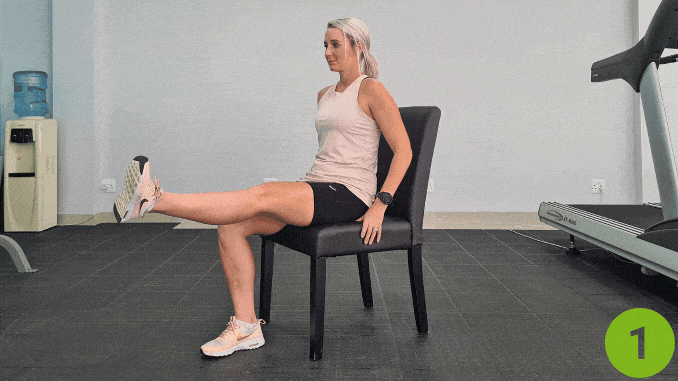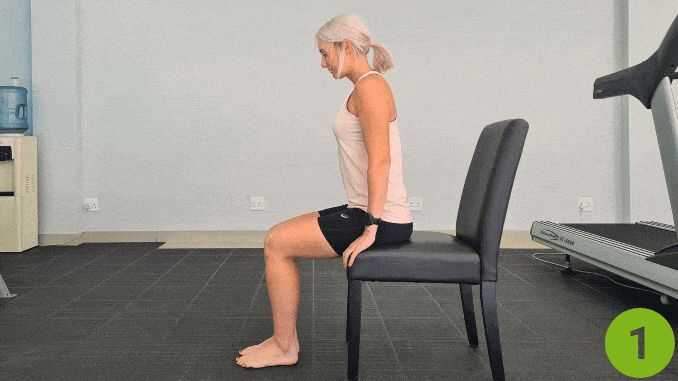
Medical Disclaimer: The information in this blog is for enlightening and educational purposes only and is not intended as medical advice. The content in this post is not meant to substitute for a professional medical diagnosis, advice, or treatment. Always ask advice from your physician or other qualified health providers with any questions you may have regarding a medical condition.
Ankle sprains are one of the most frequent injuries, affecting millions of people annually. They typically occur when the ankle twists or rolls unexpectedly. These injuries can happen during sports, physical activities, or even while walking on uneven ground.
Moreover, each year, ankle sprains [1] account for about 2 million injuries, making them a significant concern. They represent about 20% of all sports-related injuries in the U.S., highlighting the need for awareness and prevention.
While full healing requires time, proper care can alleviate pain, reduce swelling, and accelerate recovery. Additionally, this guide provides effective steps for managing a sprained ankle, with tips on how to heal a sprained ankle overnight, promote faster healing, and avoid complications.
Understanding Ankle Sprains
An ankle sprain occurs when one or more ligaments surrounding the ankle joint get stretched or torn. Moreover, ankle sprains are common injuries that can occur during sports, in accidents, or even while walking.
How to Tell If You Have a Sprained Ankle:
Signs of a sprained ankle include:
- Sudden pain when the injury happens
- Pain when putting weight on the foot or touching the area
- Pain that gets worse when moving the foot in certain ways
- Swelling and tenderness in the ankle
- Bruising, redness, or warmth
- Difficulty moving the ankle
- Moreover, a feeling of instability or a “popping” sound during the injury
Immediate Treatment for a Sprained Ankle

- Use the RICE approach [2] (rest, ice, compression, and elevation) to reduce swelling and alleviate pain.
- Apply ice to the affected area for 15-20 minutes, 3-4 times during the evening. This will help reduce swelling and numb the area to alleviate pain.
- Wrap the ankle with an elastic bandage or compression wrap. This will provide support and help control swelling. Make sure it’s snug but not too tight.
- Prop your ankle up on a pillow so it’s elevated above the level of your heart. This helps drain excess fluid and reduce swelling overnight.
If swelling or pain does not improve within 24–48 hours, or if you cannot bear weight, consult a doctor to rule out fractures or severe ligament damage.
Quick Exercises for Ankle Sprain
These exercises can be done in the morning once the swelling has reduced, usually 48–72 hours after the injury. Starting too soon may delay healing or cause further injury.
According to Dr. Plancher, starting exercises too soon may delay healing or cause further injury, so it’s essential to wait until inflammation subsides.
While it’s impossible to heal a sprained ankle completely overnight, these steps can significantly reduce pain and swelling to accelerate your recovery and support your journey on how to heal a sprained ankle overnight.
1. Seated Heel Raise

- Begin in an upright sitting position on the edge of the chair with your knees bent and feet flat on the floor.
- Maintain good alignment with your head, shoulders, and hips.
- Place your hands on your lap. Engage your core muscles.
- Slowly raise your heels off the floor, lifting your feet and pressing through the balls of your feet.
- Hold this position briefly, feeling the stretch in your calves.
- Hold this position for several deep belly breaths, in through your nose, out through your mouth.
- Return to the starting position and repeat the movement
2. Ankle Circles

- Begin in an upright sitting position on a chair with your knees bent and feet flat on the floor.
- Maintain good alignment with your head, shoulders, and hips.
- Then, place your hands at your side. Engage your core muscles.
- Lift and extend one leg in front at hip height.
- Slightly lean back to increase the angle of your body.
- Move your ankle in a circular motion with 5 repetitions.
- Moreover, relax and repeat the movement on the opposite leg.
3. Towel Stretch

- Begin in an upright sitting position on the floor with your legs straight and close together.
- Maintain good alignment with your head, shoulder, and hips.
- Then, loop a towel around the balls of your feet. Hold the ends of the towel with each hand.
- Tighten your abdominal muscles.
- Lean back as you pull the towel towards you while keeping your legs and spine straight.
- Moreover, hold the position for several deep belly breaths, in through your nose and out through your mouth.
4. Calf Stretch

For this exercise, you need to use a chair and a stepper.
- Begin in an upright standing position in front of a chair and a stepper.
- Maintain good alignment with your head, shoulders, hips, and legs.
- Then, place your hands on the back of the chair. Engage your core muscles.
- Press one heel on the floor to lift your toes and press it on the side of the stepper.
- Keep your spine straight and hold the position for several deep belly breaths, in through your nose and out through your mouth.
- Moreover, relax and repeat the movement on the opposite side.
5. Gastrocnemius Calf Stretch

For this exercise, utilize the wall for support if needed.
- Begin in an upright standing position facing the wall, with your feet hip-width apart.
- Maintain good alignment with your head, shoulder, hips, and legs.
- Then, place both your hands on the wall.
- Engage your core and take a step back with one foot.
- Bend the front knee and lean towards the wall, feeling the stretch in the back leg.
- Hold this position for several deep belly breaths, in through your nose and out through your mouth.
- Moreover, repeat the movement.
6. Toe Raises

- Begin in an upright sitting position on the edge of a chair with your knees bent and feet flat on the floor.
- Maintain good alignment with your head, shoulders, hips, and legs.
- Then, press your hands at the side of the chair to keep your spine straight. Engage your core muscles.
- Lift your toes off the floor while keeping your heels grounded.
- Moreover, hold the position for a couple of seconds.
- Lower your toes to return to the starting position and repeat the movement 10 repetitions.
Conclusion
Healing a sprained ankle overnight requires immediate treatment, home remedies, and proper care. By following these tips and techniques on how to heal a sprained ankle overnight, you can reduce swelling, alleviate pain, and promote faster healing. Remember to seek medical attention if you experience severe pain or swelling or if you have difficulty walking or putting weight on the injured ankle.
To prevent future ankle sprains, focus on strengthening the ankle with exercises like balance training and use supportive footwear during physical activities.
If you are looking for ways to eliminate pain and properly heal your Ankle Sprain, then check out the Ankle Sprain Solved program, here!
FAQ’s
What is the fastest way to heal a sprained ankle?
The fastest way to heal a sprained ankle is by following the RICE method (Rest, Ice, Compression, Elevation) in the first 48 hours. This helps reduce swelling and pain. After that, gentle stretching and strengthening exercises can help restore movement and strength. If necessary, see a physical therapist for guidance on exercises and recovery. For severe sprains, physical therapy may be needed to recover fully.
Can a sprained ankle heal in 2 days?
While mild ankle injuries can show improvement in 2 days, it’s unlikely for a sprain to fully heal in such a short time. Ankle ligaments need time to heal, and recovery can take from a few days to several weeks, depending on the severity. Moreover, a high ankle sprain or inversion sprain may take longer to heal. Be patient and follow your treatment plan to avoid further damage.
How do I know if my ankle sprain is grade 1 or 2?
Grade I sprains cause mild swelling and tenderness, Grade II causes moderate pain and swelling, and Grade III involves severe swelling, bruising, and inability to bear weight
According to the Michigan Foot Doctors:
- Grade 1: Mild injury, heals in about 2-4 weeks.
- Grade 2: Partial tear; takes 3-4 weeks to heal.
- Grade 3: Full tear, may need 6+ weeks or surgery.
If you’re unsure, it’s best to see a physical therapist or doctor for a proper diagnosis and treatment plan.
How to sleep with a sprained ankle?
To sleep with a sprained ankle, elevate it on a pillow to reduce swelling and keep the ankle supported. You can use a compression wrap to help control swelling while you sleep. Avoid putting pressure on the injured ankle to prevent further injury. If you’re concerned about a broken ankle or a more severe injury, see a healthcare provider for an X-ray.

